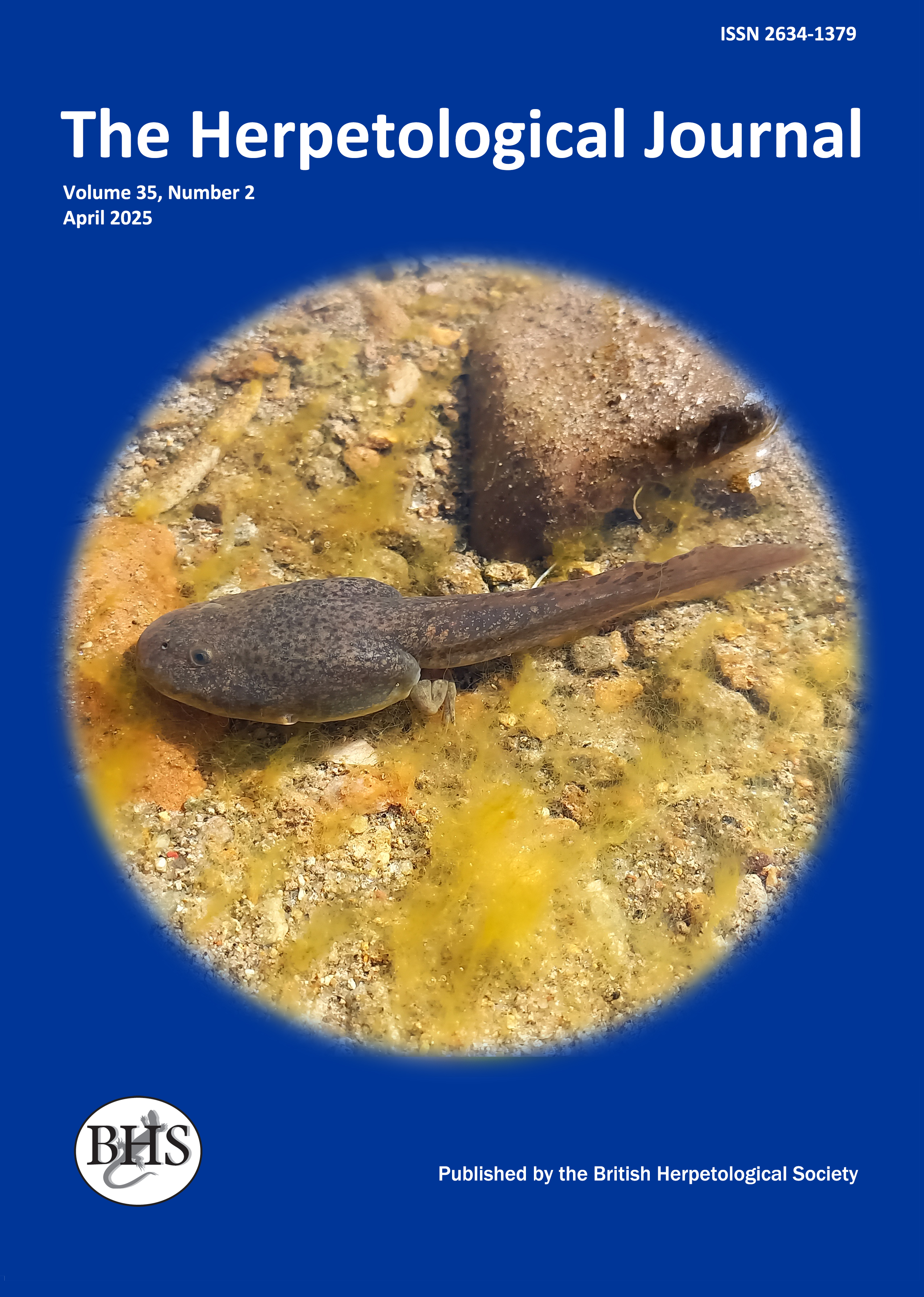
The Herpetological Journal
The Herpetological Journal is the Society's prestigious quarterly scientific journal. Articles are listed in Biological Abstracts, Current Awareness in Biological Sciences,Current Contents, Science Citation Index, and Zoological Record.
ISSN 0268-0130
2021 Impact Factor from Clarivate for the Herpetological Journal is 1.194, an increase of 0.332 from 2020.
pdf 08. Genetic diversity and conservation priorities of the gecko Homonota uruguayensis from the pampas of Uruguay and southern Brazil
18 downloads
Subscription / purchase required
DOI: https://doi.org/10.33256/35.1.8188
pp. 81-88
Authors: Ernesto Elgue, Arley Camargo & Raul Maneyro
Abstract: Current knowledge in conservation genetics emphasises that the priority value of an area also depends on the genetic diversity it harbours, therefore fine-scaled studies of the spatial genetic structure are necessary for making informed decisions about prioritisation of natural areas and wild populations for conservation and/or management. Homonota uruguayensis is a threatened lizard according to IUCN criteria, with a distribution restricted to rocky outcrops of the Pampa biome in northern Uruguay and southern Brazil. The aim of this work was to establish conservation priorities of H. uruguayensis populations based on the spatial distribution of genetic phylodiversity and the delimitation of management and evolutionary significant units. Sequence data from the nuclear PRLR and the mitochondrial cytochrome b genes were obtained from most of the species distribution in order to estimate genealogies through Bayesian inference, delimit populations with Geneland, and calculate phylodiversity statistics. The results showed the presence of six geographically well defined populations with a strong structure, which we assign to different management units for conservation. The highest phylogenetic diversity were found in northern Artigas (Uruguay), and in the southernmost locations of Rio Grande do Sul (Brazil). However, northern Salto (Uruguay) is the region that best complements the protected area Paisaje Protegido Valle del Lunarejo in Uruguay, and we suggest that both areas would jointly ensure the conservation of the greatest proportion of the total phylogenetic diversity within the species.
Keywords: reptile, phylogenetic diversity, population genetics, DNA, Gekkota, management units

